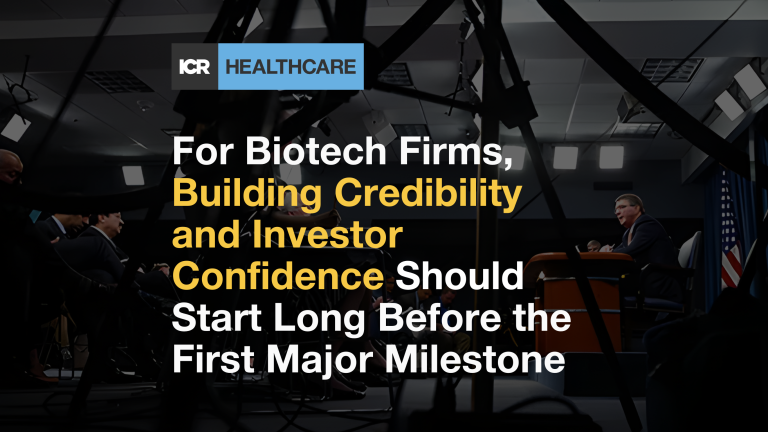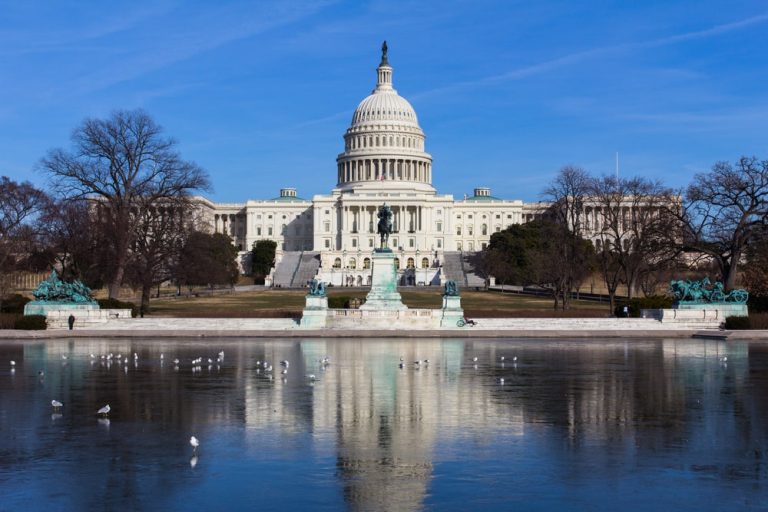After nearly 20 years of working in healthcare communications, the excitement never gets old for me. What’s not to love about an industry that’s critical to life itself, rife with issues and controversy, and delivers a solid dose of the unexpected on a daily basis?
In my mind, a highlight is the problem solving our job requires every day. Whether pursuing an opportunity, managing an issue or leveraging an insight, it’s our responsibility to chart the path forward on behalf of our clients. We create integrated annual plans based on industry research and analytics, tailor communications strategies to achieve measurable goals and lead teams to execute against those plans, all while juggling the day-to-day zigs and zags, proactively and reactively tapping into competitive news and industry trends.
From the vantage point of Fall 2020, many of us can recall with deep fondness the start of this year. When the JP Morgan Healthcare Conference came to a close in January, just days after the first COVID-19 death in China was reported by the New York Times, the top concerns we faced as an industry were the relative lack of big deals, lack of diversity in the industry and among conference attendees, drug pricing and privacy concerns associated with healthcare AI data. Fast-forward nine months, and … need I say more? 2020 has consistently delivered the unexpected like an infomercial: “But wait, there’s more!”
Although the year isn’t over, and we find ourselves continuing to work through some of the unexpected challenges 2020 presented, I find this pivotal year has reinforced some of the core tenets of communications, driving pervasive conversations about the healthcare industry and forcing new dialogues on development, efficiency and growth. If harnessed appropriately, globally, the learnings from this year can drive stronger industry positioning before the next pandemic strikes.
Preparation
A crisis is never welcome, but the right response can drive market reputation. When advising our clients around issues of crisis preparedness, we ensure these critical steps are mapped out in detail and updated with some regularity.
- When first developing a crisis plan, cast a wide net to identify potential expected or unexpected scenarios and vulnerabilities, including those specific to the company and industry, as well as areas that could impact any business.
- Assemble a cross-functional team of in-house and external consultants to serve as subject matter experts should a crisis arise.
- Determine communication protocols and ensure the policy is clear and communicated internally.
- Develop reactive responses and train approved spokespeople on standby statements.
Global pandemics aren’t often on the list of expected — or unexpected — scenarios in crisis plans. Encountering this pandemic required quick assessment of previously prepared crisis plans, balanced with a close eye on changing industry updates and recognition and monitoring of the unknowns.
One additional element of crisis communications that can be overlooked is defining success. This has been a hard lesson in the age of COVID-19 with varied recovery timelines, changing and conflicting mandates, and governing bodies setting and moving goalposts without always communicating the rationale or strategy driving decisions.
Authenticity
Authenticity has always been a core pillar in corporate communications, from leadership to mission and values and everything in between. In the midst of the global pandemic, authenticity seemed inescapable and yet paramount. Companies were forced to look at themselves in the mirror, or Zoom video share, and put their corporate values to the test. What emerged was a renewed understanding of the importance that when communicating across stakeholders in corporate and healthcare, messaging must be authentic, consistent, credible and concise.
Aligning authenticity and consistency requires awareness and attention to detail. Everything from media materials, social content, investor presentations and internal intranet updates should be consistent with a company’s overarching narrative, shifting only when necessary to align with changes in strategic priorities.
This year, the scrutiny that corporate messages are held to was tested from many angles, making proof points, case studies and anecdotes all the more important to validate positioning.
Collaboration
While biopharma M&A deals and partnerships have long been key components of healthcare R&D, COVID-19 served as a catalyst for unprecedented industry collaboration that has been instrumental to global rapid-response efforts. Mid-year, while deal value was lower than mid-year 2019, deal volume was up, and there was already a considerable shift towards “risk-sharing” in biopharma partnerships as opposed to “risk-taking.”
The influx of COVID-19 public-private partnerships supported clinical trial coordination, mitigated manufacturing bottlenecks and expedited regulatory pathways. In lockstep, the tone of messaging shifted to reflect this unified landscape with an urgency and transparency across data communications to support learnings from failures and successful innovations in parallel paths.
Centenarian Views
I had the fortunate experience to spend time with a family friend this summer, a centenarian still sharp as ever as she approaches her 103rd birthday. I asked about her experiences living through two global pandemics. Though she’d just been born when the world was hit with the Spanish flu, she had many stories about resilience, recovery and relative risk. A hundred years from now, when assessing how the world reacted to this global pandemic, it’s hard to say what the takeaways will be, but there will surely be many. While I won’t hazard to guess what the world will look like in 2120, I feel confident that preparation, authenticity and collaboration will still be critical in the ever-changing, problem-solving world of healthcare communications.
We’re not yet on the other side of this pandemic, but I hope that 100 years from now, the centenarians of that time will be able to speak about our resilience and resurgence. Could the flexibility that Operation Warp Speed and the Emergency Use Authorization process enabled help foster continued clinical trial engagement and enrollment in a post-pandemic era? Can we harness the efficiencies born in 2020 to drive a new era for healthcare solutions with enhanced data-sharing technology? Will the elevated understanding and household dialogues around science result in increased STEM funding and inspire more of today’s youth to pursue careers in healthcare, resulting in greater diversity across all aspects and titles in the field?
Collectively as healthcare communicators, these are problems we can help solve. For more insight into an effective PR strategy that can set up your company for success, download our eBook, “PR 101: A Guide for Today’s Public Relations.”



